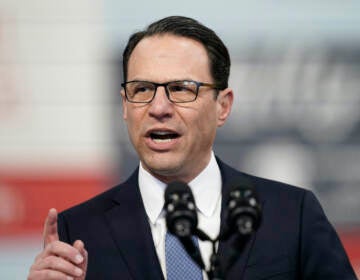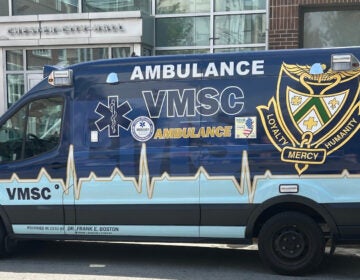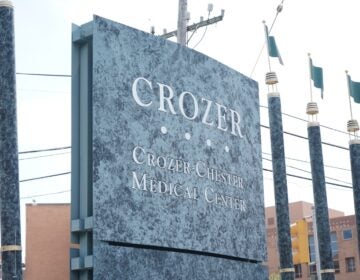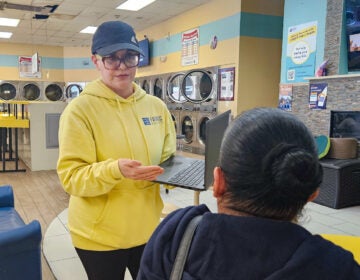White House drug czar eyes Philly’s response to emerging xylazine threat
Xylazine, an animal tranquilizer, has been appearing in an increasing number of street drug samples and opioid overdose deaths in Philadelphia and across the U.S.

Dr. Rahul Gupta, Director of the White House Office of National Drug Control Policy, spoke about the dangers of xylazine, a drug that’s exasperating the opioid crisis in Pa., at the Philadelphia Department of Public Health on April 19, 2023. (Kimberly Paynter/WHYY)
The nation’s leading official on drug control policy, Dr. Rahul Gupta, was in Philadelphia this week to look at on-the-ground efforts in addressing the impact of xylazine on people who use drugs.
A sedative approved for veterinarians to use on large animals, xylazine is playing an increasing role in street drug use and opioid overdose deaths across the country.
People who use or inject the drug go on to develop open skin sores, infections, and necrotic tissue that in some cases requires amputation.
Local and national health officials say they’re working to increase a sense of urgency around the problem and locate additional funding that can be used for services like wound care vans and xylazine test strips in Philadelphia.
Gupta, director of the White House Office of National Drug Control Policy, said treatment providers in Philadelphia are ahead of the curve in terms of addressing this issue.
“You’re leading the way in developing management protocols, managing people and their complications and saving lives,” he said. “This helps guide our national response.”
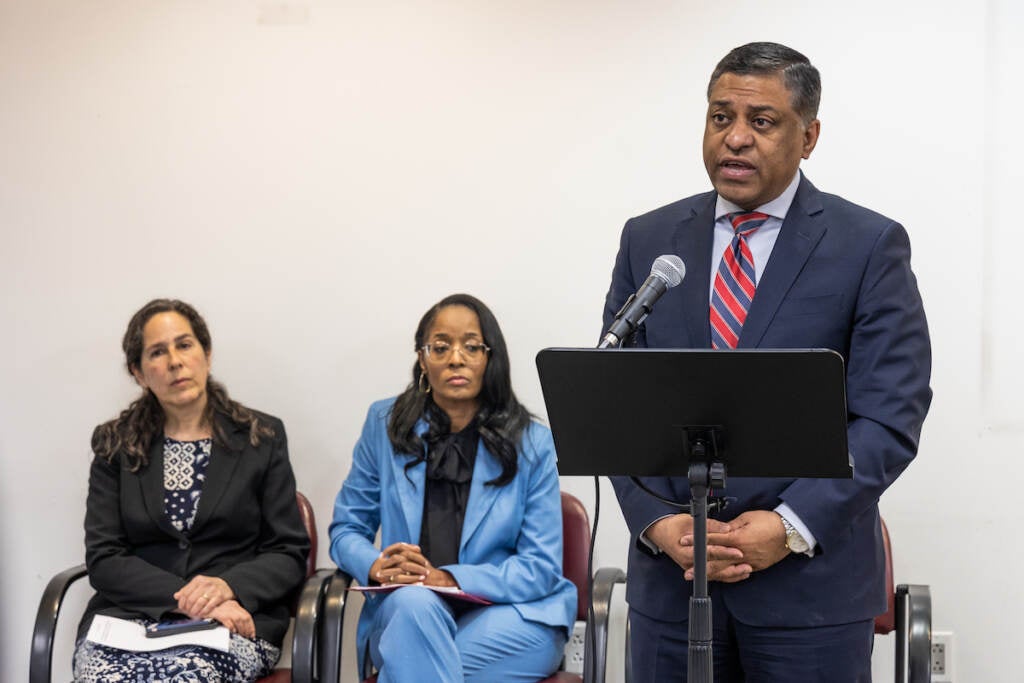
Xylazine, known as “tranq,” is not an opioid, but it’s often used with opioid substances like fentanyl to reportedly prolong the high.
About 90% of street opioid drug samples collected in Philadelphia in 2021 contained xylazine, according to city data.
Philadelphia harm reduction organizations and addiction medicine experts are running many of the response programs and services in the city’s hardest hit communities, including Kensington.
Earlier this month, the Biden administration designated xylazine – when mixed with fentanyl – as an emerging threat to the United States. The drug has appeared in street use before, but more dramatically in recent years.
Gupta said the proactive designation step could help focus efforts on identifying where xylazine is coming from and how it gets into street drug supplies in Philadelphia and other communities.
“We’re working right now to figure out whether [the xylazine] that is ending up mixed in with fentanyl is part of diversion from manufacturers, and whether they are from United States or from China,” or if it’s a complex combination of factors driving the illicit supply chain, Gupta said.
Philadelphia Department of Public Health Commissioner Dr. Cheryl Bettigole said the city is working with the Center for Forensic Science Research and Education in Willow Grove, Montgomery County, to do more in depth xylazine testing on local street drug samples.

On the clinical front, Bettigole said a new inpatient collaborative of health providers at hospitals across the city meets regularly to improve diagnosis and treatment plans for people who come to emergency departments and health facilities with xylazine-related wounds.
Because most substance use treatment programs do not admit people if they have open wounds, Bettigole said the city and other experts are looking at other options for this subset of people.
Pennsylvania Gov. Josh Shapiro announced this week that the state will classify xylazine as a schedule III substance under the commonwealth’s Controlled Substances, Drugs, Device, and Cosmetic Act.
“Making xylazine a schedule III drug places tighter control, security, and recordkeeping on legitimate users and sellers to keep it out of the illicit drug supply,” Dr. Latika Davis-Jones, Acting Secretary of the Pennsylvania Department of Drug and Alcohol Programs, said.
The change is expected to take effect next month. Philadelphia health officials said it’s one more tool they can use to counter the spread of the drug.

WHYY is your source for fact-based, in-depth journalism and information. As a nonprofit organization, we rely on financial support from readers like you. Please give today.


